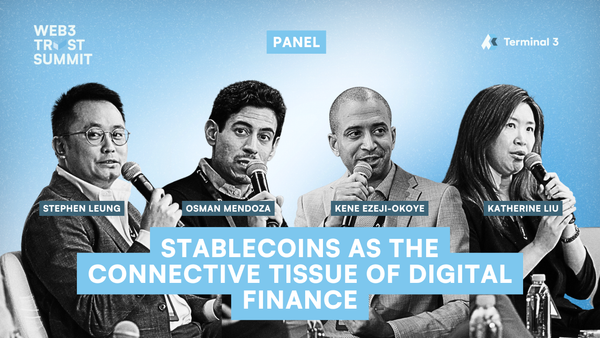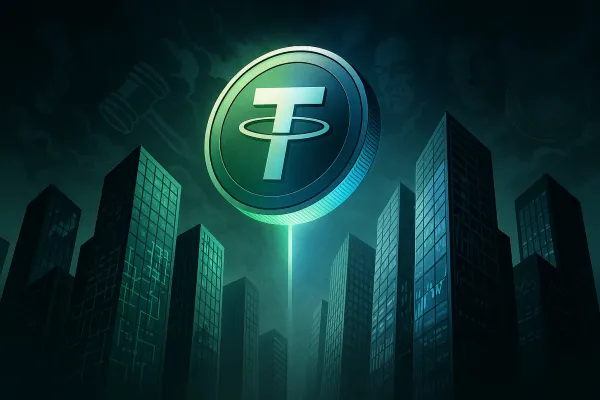The good, bad and ugly of Web3 social networks

GM,
This week’s issue is a little later than usual as I (Jon) went back to my European roots with a very typical August break which only just ended.
We hope you enjoyed your summer break, too. We’re getting back to business this week with a look at Friend.tech, a Web3 social network that has shown the pros and cons of tokenization and given us a glimpse at what future monetization could look like. It’s another example of why community is such an important part of Web3, as we recently wrote while looking at corporate NFT projects.
We will be back again on Friday, as normal, to make this week a SO WHAT double header.
See you soon,
What’s going on?
Friend.tech is a buzzy, new social network that gained attention in August for allowing its users to monetize their online presence by selling access to chats and their status.
It uses blockchain technology to tokenize social media users, allowing others to buy their ‘keys’ (using Ethereum) for access to private chats and gated communities. An algorithm calculates the value of keys based on engagement, popularity and more.
Despite being in beta, it attracted over 130,000 active users but activity died down after a couple of weeks. Still, Friend.tech illustrates the benefits and issues of tokenization and why the future of digital identity can be different.
SO WHAT?
1. Fantasy sports for anyone
The concept is simple.
Influencers monetize their reputation by putting a price on it through engagement and popularity.
Followers join an influencer’s community and chats by buying their keys, which can appreciate in value allowing the community to share in the upside.
Initially a hit with crypto-focused X users, it went on to attract handfuls of sports players, OnlyFans users and other online creators with communities.

2. Conflicting incentives
Friend.tech likely went viral because it was a money-making opportunity during a crypto winter. Once popular influencers hopped on the platform, their followers joined and key prices rose meaning early buyers made profit.
But there’s a fascinating dynamic that tokenization brings. Twitter—now X—offers paid subscriptions and is building a monetization program that rewards users for the reach of their posts, but it has been criticized for uneven payouts (most are low) and rewarding users who don’t post original content.
Friend.tech taps X directly—authentication is via a user’s account—but the key price algorithm rewards authentic engagement and community. So key owners and their communities make money for building community and content rather than whatever goes viral.
That’s the theory. But the ability to make (or lose) a quick buck incentivizes users to trade which makes prices volatile.
Friend.tech lost steam so quickly because it became about making money. Since it hasn’t been adopted widely beyond Web3, the ‘buying options’ are too limited to attract more mainstream users.
3. The inevitable fall
Friend.tech shows anything can be tokenized. It mimics concepts like Klout, which launched in 2008 to allow social media users to put a number on their online reputation, but used the concept of Web3 communities to add monetization and community appeal.
Klout struggled to be meaningfully mainstream, but the viral nature of blockchain and the existing Web3 community enables crypto projects to quickly pick up early scale. But engagement fell rapidly—the number of daily transactions on Friend.Tech went from a peak of over 500,000 on 21 August to fewer than 19,000 on 1 September.

Despite the drop, Friend.tech still attracted more than $600,000 in Ethereum inflow per day at its lowest point so far, according to data from analytics platform Dune.
It’s not uncommon for the hype around social media to die down after launch but a major comeback seems unlikely at this point. Still, it has showcased a different monetization model.
Platforms like YouTube, X and TikTok let creators monetize through advertising revenue share but Friend.tech captures value from the network they build. It also adopts a pure Web3 ideal: those who participate in a network and bring it value, are rewarded in its success. Or, in this case, the losses.
News bytes
- The SEC has taken its first action against an NFT project which it says is an unregistered security
- There was big news for ETFs as a US appeals court ruled in favor of Grayscale converting its Bitcoin Trust into a spot ETF—but the SEC has delayed decisions on bitcoin ETFs from BlackRock, Fidelity and others
- Shopify now lets its merchants take payment from customers through Solana using the USDC stablecoin
- Crypto exchanges across Asia are tightening their KYC requirements in line with stricter regulation across the region
- Animoca Brands founder Yat Siu’s TED Talk on the future of the internet and identity is now available on YouTube (it’s just over 10 minutes long)
- Coinbase CEO Brian Amstrong published a list of 10 Web3 business ideas he would build today
That’s all for this week!
You can share your feedback, questions or requests via email to: sowhat@terminal3.io




